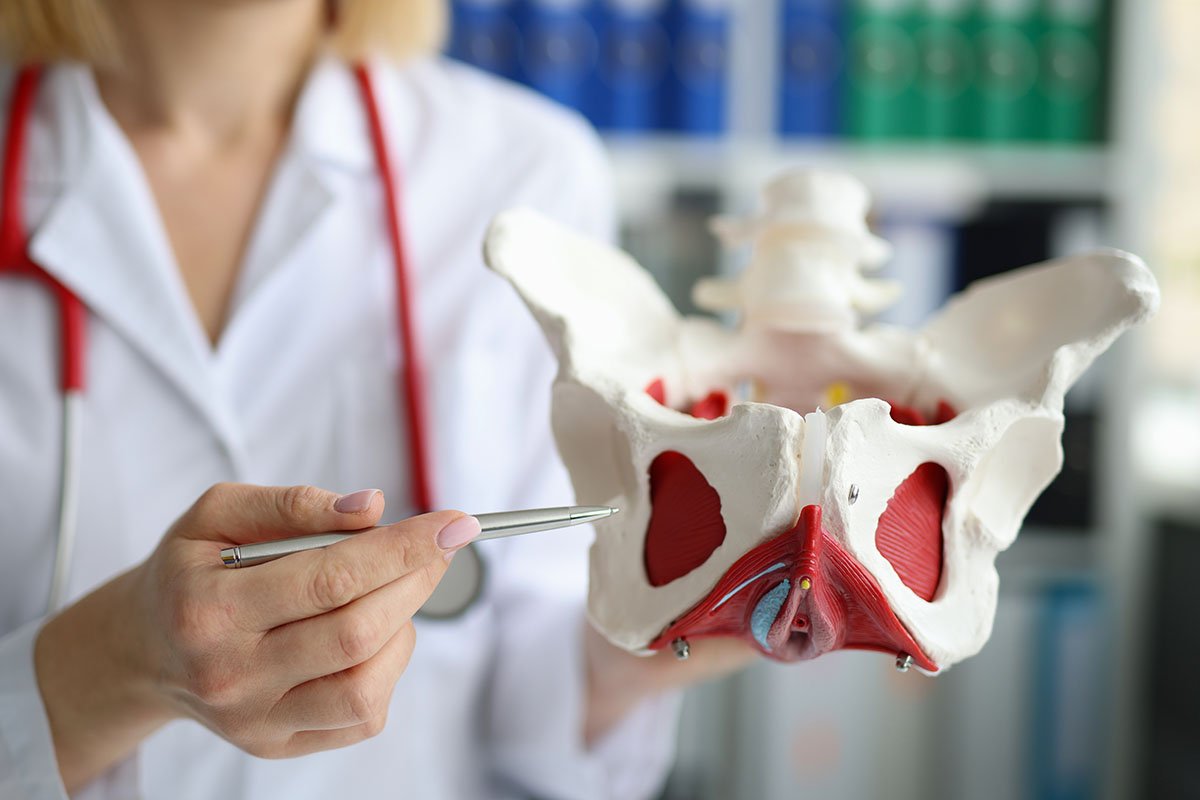
Pelvic Floor Care Providers
The pelvic floor is a group of muscles, ligaments, and connective tissues that support the pelvic organs, including the bladder, uterus, and rectum. These muscles play a crucial role in functions such as bladder and bowel control, sexual function, and overall pelvic stability.
Physical Therapists
-

Amy Healy
-

Dr. Judith Meer
-

Dr. Kaleigh Mulpeter
-

Meagen Satinsky
Pelvic Health Professionals
-

Hemmett Health
-

Amy LePage
-

Erin McCabe
-

Caitlin Bone

Search by Location
Frequently Asked Questions
-
The pelvic floor is a group of muscles, ligaments, and connective tissues that form a supportive sling or hammock at the base of the pelvis. It spans the area below the pelvic cavity and supports the organs within the pelvis, including the bladder, uterus, and rectum.
-
By having a good understanding of the pelvic floor and how it is affected by pregnancy and childbirth, expectant parent can take proactive steps to support pelvic health, prepare for labor, and promote a smoother postpartum recovery. Additionally, seeking guidance from healthcare providers can provide personalized recommendations and support throughout the pregnancy and postpartum journey.
-
Pelvic Girdle Pain (PGP): PGP refers to discomfort or pain in the pelvic region, including the front and back of the pelvis, hips, and lower back. It is common during pregnancy due to hormonal changes, increased joint laxity, and the growing weight of the uterus.
Urinary Incontinence: Many individuals experience urinary incontinence during pregnancy and postpartum. This can include leaking urine when coughing, sneezing, laughing, or exercising due to weakened pelvic floor muscles or increased pressure on the bladder. Though our culture normalizes this it is something to see a pelvic floor specialist about.
Fecal Incontinence: Some individuals may experience fecal incontinence, which involves the involuntary loss of stool, during pregnancy or postpartum. This can occur due to weakened pelvic floor muscles, nerve damage, or trauma during childbirth.
Pelvic Organ Prolapse: Pelvic organ prolapse occurs when pelvic organs, such as the bladder, uterus, or rectum, descend into the vaginal canal. This can cause a feeling of pressure or fullness in the pelvis and may be exacerbated by pregnancy and childbirth.
Perineal Trauma: Perineal trauma, including tears or episiotomies (surgical incisions to enlarge the vaginal opening during childbirth), can occur during vaginal delivery. Healing from perineal trauma can be uncomfortable and may impact pelvic floor function postpartum.
Pelvic Pain: Pelvic pain, including discomfort in the lower abdomen, pelvis, or perineal area, is common during pregnancy and may persist postpartum. This can be due to a variety of factors, including pelvic floor muscle tension, nerve compression, or musculoskeletal changes.
Diastasis Recti: Diastasis recti is a separation of the abdominal muscles that commonly occurs during pregnancy as the uterus expands. This separation may persist postpartum and can contribute to pelvic floor dysfunction and core instability.
Sexual Dysfunction: Some individuals may experience sexual dysfunction, including pain during intercourse or decreased sexual satisfaction, during pregnancy or postpartum. This can be related to pelvic floor issues, hormonal changes, or psychological factors.
Emotional Well-being: Pregnancy and postpartum can also impact emotional well-being, including anxiety, depression, or stress. These emotional factors can influence pelvic floor function and recovery.
Addressing these common pelvic floor issues during pregnancy and postpartum may involve a combination of pelvic floor exercises, physical therapy, lifestyle modifications, and support from healthcare providers. It's essential for individuals to seek appropriate care and support to promote pelvic health and overall well-being during this time.
-
Throughout the journey of conception, pregnancy, birth, and postpartum, there are various professionals available to provide support and guidance for pelvic floor health. Here's an overview of some of these professionals and their roles:
Pelvic Floor Educators: Pelvic floor educators are knowledgeable professionals who provide education and information about pelvic floor anatomy, function, and health. They may offer classes, workshops, or individual consultations to teach individuals about pelvic floor exercises, proper body mechanics, and strategies for maintaining pelvic health during pregnancy and postpartum.
Pelvic Floor Physical Therapists (PTs): Pelvic floor physical therapists are specialized healthcare professionals who assess, diagnose, and treat pelvic floor disorders. They work with individuals to address issues such as pelvic pain, urinary or fecal incontinence, pelvic organ prolapse, and diastasis recti through techniques such as pelvic floor exercises, manual therapy, and biofeedback. Pelvic floor PTs also provide guidance on optimizing pelvic floor function during pregnancy, preparing for childbirth, and promoting postpartum recovery.
Personal Trainers: Certified personal trainers with expertise in prenatal and postnatal fitness can play a valuable role in supporting pelvic floor health. They can design customized exercise programs that focus on strengthening the pelvic floor muscles, improving overall fitness, and addressing common pregnancy-related issues such as back pain and postural changes. Personal trainers can also provide guidance on safe and effective exercise modifications throughout pregnancy and postpartum.
-
A pelvic floor physical therapist is a specialized healthcare professional who is trained to assess, diagnose, and treat various conditions related to the pelvic floor muscles and surrounding structures. The pelvic floor is a group of muscles, ligaments, and connective tissues that support the pelvic organs, including the bladder, uterus, and rectum. These muscles play a crucial role in functions such as bladder and bowel control, sexual function, and overall pelvic stability.
Pelvic floor physical therapists are typically licensed physical therapists who have received additional training and education in the assessment and treatment of pelvic floor disorders. They work with individuals, both men and women, who may be experiencing a wide range of pelvic floor issues, including:
Pre and Postpartum Care: During pregnancy, pelvic floor physical therapists can help people prepare for childbirth and afterward, aid in recovery and address any issues like diastasis recti or pelvic pain that may arise postpartum.
Sexual Dysfunction: They can work with individuals experiencing sexual dysfunction, helping to improve pelvic floor muscle function to enhance sexual health.
Preventative Care: Some individuals seek the services of a pelvic floor physical therapist as a preventive measure to maintain pelvic health and function, especially if they have risk factors for pelvic floor issues.
Pelvic Pain: Pelvic floor physical therapists can help diagnose and treat various types of pelvic pain, including chronic pelvic pain, vulvodynia, and interstitial cystitis.
Incontinence: They can assist individuals dealing with urinary incontinence (loss of bladder control) or fecal incontinence (loss of bowel control), which can occur due to weak or dysfunctional pelvic floor muscles.
Pelvic Organ Prolapse: In cases where the pelvic organs (such as the bladder, uterus, or rectum) descend into the vaginal canal, a pelvic floor physical therapist can provide exercises and other interventions to manage and alleviate symptoms.
Treatment approaches used by pelvic floor physical therapists may include pelvic floor muscle exercises, biofeedback, manual therapy techniques, education on bladder and bowel habits, lifestyle modifications, and more.
Individuals are usually referred to a pelvic floor physical therapist by a primary care physician, urologist, gynecologist, or other healthcare providers when there are concerns related to the pelvic floor. These therapists play a crucial role in helping individuals manage and improve their pelvic health and overall quality of life.

